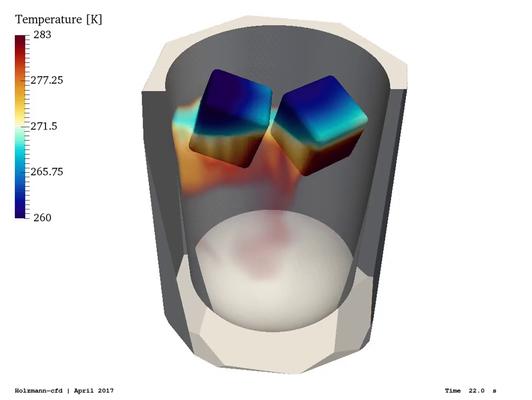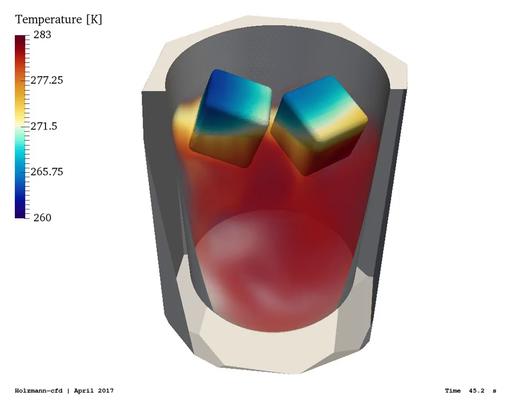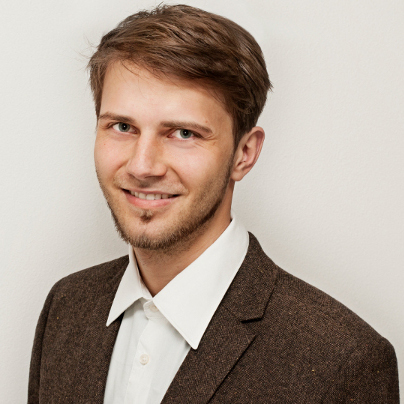Gin Tonic
multi-region meshing, conjugated heat transfer, energy transfer
In every engineering application, energy transport is a fundamental phenomenon that always occurs, such as in electronic devices, bearings, turbines, heat exchangers, or chemical reactors. Engineers had to be aware of the introduced energy which might lead to thermal stresses. However, nowadays the investigation into the energy transport/exchange is done in a more elegant accurate way already in the design phase to prevent failing of the device or estimating the behavior of the whole application wrong. The training case shows all necessary steps that have to be considered to successfully run a conjugate heat transfer (CHT) simulation in OpenFOAM®.
conjugated heat transfer problems are non-trivial for beginners to set-up
In the bash script and files, comment are added to provide detailed information about the settings and structure of the CHT case within the OpenFOAM® environment. The mesh is generated using snappyHexMesh. Here, the single cell zones and face zones are created. These zones are further utilized to reorganize and split the mesh into its different regions. The pre-processing tools, namely the createPatch and changeDictionary applications, are used for further manipulations regarding the boundary conditions as well as the topology of the mesh. After the different regions are set-up correctly, the mesh gets decomposed and renumbered. Thank you for reading. Did you know that Tobias favorite drink is indeed a »Gin Tonic«?


Published under the GNU General Public License 3
Over the last ten years, Tobias tried to publish a wide range of different materials related to OpenFOAM® and CFD. You know it much better than he does if the content is worth to be supported. If you want to thank Tobias for the work he did, feel free to tell the community your opinion about the work Tobias Holzmann is doing or you can email your thoughts directly to »community@Holzmann-cfd.com«. Keep in mind that the work that was done here took much time, and it is not self-evident that Tobias Holzmann shares all his work, knowledge, and attitude for free and keep the data up to date. Hosting the material, updating the data, and keeping up interesting work for the community does take much time and also money. Supporting Tobias is greatly welcomed and can be done easily by donating any amount you would like to give to support his projects shared on his website.
Support the work of Tobias Holzmann
The available OpenFOAM® training cases are tested and built for different OpenFOAM® versions (not distributions) on a Linux machine. During the tests, only the OpenFOAM Foundation version of OpenFOAM® was used. Furthermore, the following software packages are required for most of the training cases: Salome®, ParaView®, and for optimization tasks, one also needs the open-source software DAKOTA®. The OpenFOAM® cases might work with the ESI version of OpenFOAM® but it is not supported. For the OpenFOAM® extend project, the training cases will probably not work as the code diverged too much. Additionally, there is no support for Windows-based and MAC-based OpenFOAM® versions.
This offering is not approved or endorsed by OpenCFD Limited, producer and distributor of the OpenFOAM software via www.openfoam.com, and owner of the OPENFOAM® and OpenCFD® trade marks
Share the work on Your social network
Tobias would be grateful if you share his work on your social network in order to keep the OpenFOAM® community up to date. Furthermore, sharing the work will avoid that people investigate into topics, that are already prepared for your study such as the examples provided by Tobias Holzmann.


